265 vs 285 Tires
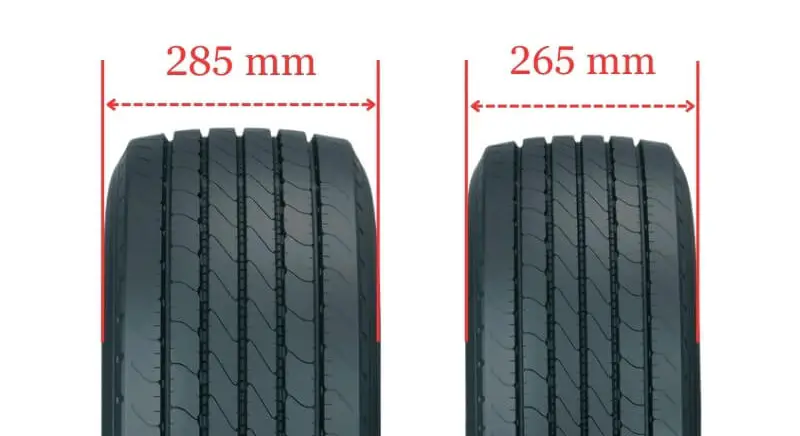
The most noticeable difference between a 265 tire and a 285 tire is the width. The 285 tire is 20mm (0.79 inches) wider than the 265 tire. Beyond just width, there are a number of factors to consider when choosing between these two tire sizes.
265 vs 285 Table
This comparison table provides a concise overview of the key differences between 265 and 285 tire sizes.
| Tire Size 265 | Tire Size 285 |
|---|---|
| 265mm Width | 285mm Width, 7.5% wider |
| Slightly less Ground Clearance | Slightly more Ground Clearance |
| Better Fuel Efficiency | Less Fuel Efficient |
| Comfortable Ride Quality | Comfortable Ride Quality |
| More Aerodynamic Look | Aggressive Bold Look |
| More Responsive Handling | Stable Handling |
| Quieter with Less Vibration | Slightly Noisier |
| Longer Tread Life | Comparable Durability |
| Cuts through Snow/Ice Better | More Traction in Mud and Off-Road |
Ground Clearance
The wider 285 tire provides slightly more ground clearance, benefiting off-road driving. However, the difference is minor – usually less than an inch.
The downside of the extra clearance is that speedometer accuracy decreases slightly with the larger 285 tires.
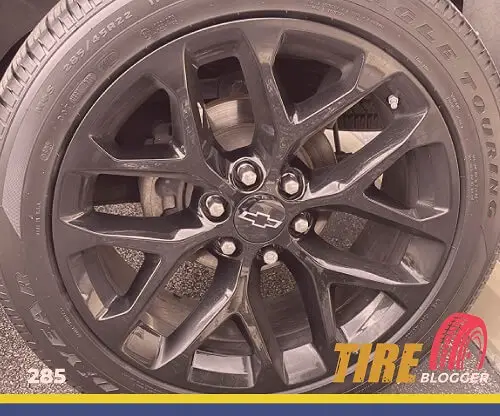
Gas Mileage
The 265, being lighter and with a smaller contact patch, will typically have better fuel efficiency than the wider 285.
Rotational mass is reduced with the 265, also improving gas mileage. This makes the 265 a better choice for daily driving focused on efficiency.
Ride Comfort
Larger tires like the 285 absorb impacts better thanks to more air volume and sidewall flex. This makes riding more comfortable, especially on uneven or rough surfaces.
However, the difference in ride quality is moderate between 265 and 285 tires.
Aesthetics Look
Visually, the wider 285 tire gives a more aggressive, robust stance. The larger footprint fills out the wheel wells more for a bolder look.
However, subjective style preference will determine whether 265 or 285 aesthetics are preferable.
Handling & Stability
The 265 offers quicker steering response and enhanced handling on pavement due to the more minor contact patch.
However, the wider 285 provides improved traction and stability for better control on loose or uneven surfaces.
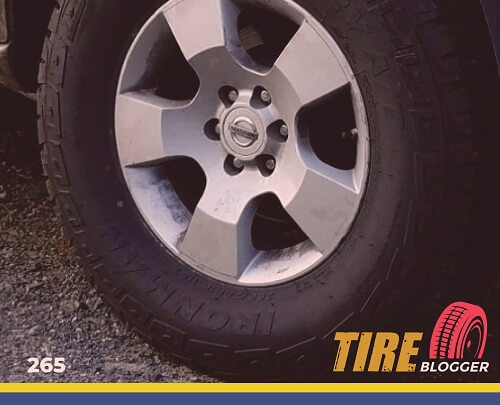
Noise & Vibration
Typically, narrower tires like the 265 will be quieter on the highway and transmit fewer vibrations. The 285 wider tread produces slightly more road noise.
However, noise and vibration differences are generally minimal between these two sizes.
Durability & Wear
With a smaller contact patch seeing more concentrated wear, the 265 may exhibit longer tread life and even tire wear.
The 285 bigger footprint distributes wear but also increases stress on the tire itself. Both offer acceptable and comparable durability.
Adverse Performance
The 265 can cut through to the road surface in snow or ice. But the wider 285 provides more traction in deep mud, loose gravel, and certain off-road conditions.
Performance in adverse conditions depends more on the tire design and tread pattern.
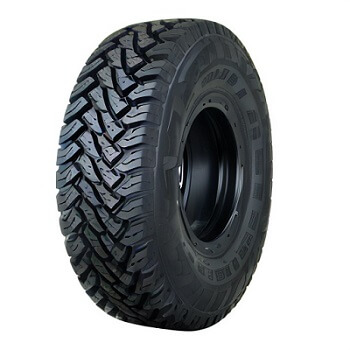
Difference Between 265 and 285 Tires
The main difference between 265 and 285 tires is the section width, with 285 tires being 20mm wider than 265 tires. This difference in width affects the tire’s performance, handling, and fitment.
Can I Use 265 Tires Instead of 285?
It is possible to use 265 tires instead of 285 tires. The ideal rim width range for 285 tires overlaps with the range for 265 tires, indicating compatibility.
New tires should match current aspect ratio and rim diameter for optimal performance. If mismatched, overall diameter difference must be under 3% to ensure speedometer accuracy.
Can I Use 285 Tires Instead of 265?
Yes, you can use 285 tires instead of 265 tires. The ideal rim width ranges for these tire sizes overlap, suggesting compatibility and proper fitment.
Ensure new tires’ aspect ratio and rim diameter are the same as current setup for accurate speedometer and vehicle performance. If mismatched, limit overall diameter difference to 3%.
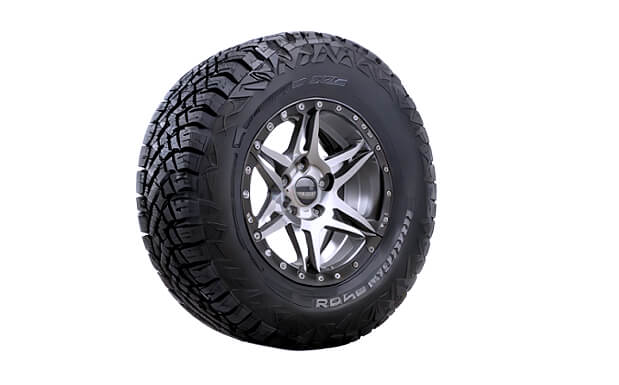
Can I Put 265 Tires on 285 Rims?
Yes, putting 265 tires on rims designed for 285 tires is possible. The ideal rim width range for 285 tires (9.0-11.0 inches) overlaps with the range for 265 tires (8.0-9.5 inches), ensuring proper fitment.
Can I Put 285 Tires on 265 Rims?
Yes, it is possible to put 285 tires on rims meant for 265 tires. The ideal rim width ranges for these tire sizes overlap, suggesting compatibility and proper fitment.
Our Observation
I recommend the 265 for most drivers when comparing these two similar tire sizes. The slightly narrower width provides better fuel efficiency and more responsive handling, ideal for daily commuting and highway driving.
While the 285 offers some advantages for off-roading, the difference is not significant enough for most to sacrifice the 265 on-road benefits. Only those who frequently deal with rough conditions and value a wider tire’s bold, aggressive stance should opt for the 285.
For my needs, I would choose the 265 for its smart balance of efficiency, comfort, and performance. The difference is not drastic, but the 265 narrower tread and lighter footprint make it the best fit for my typical driving priorities.

Meet Caitlin McCormack, a Tire Size Expert and Blogger Passionate About Everything Related to Tires. With Years of Experience in the Tire Industry, Caitlin Has Become an Expert in Tire Sizes and Their Impact on Vehicle Performance.

What issues will I have if I put 265s on the front and 285s on the back?
Going with a larger width tire on the rear (285) compared to the front (265) can cause some handling, clearance, and traction issues due to the difference in grip front to back. It may also lead to speedometer inaccuracies and decreased fuel mileage. Make sure to check for proper tire fitment and suspension compatibility when sizing tires this way.